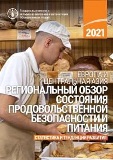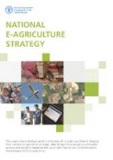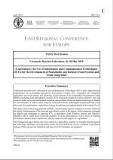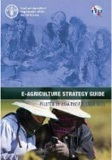
Europe and Central Asia – Regional Overview of Food Security and Nutrition 2023
Publication Series
Publications
![cc0576en_200[1]](/images/reulibraries/default-album/cc0576en_200-1-.tmb-th600x450.jpg?Culture=en&sfvrsn=7d6f6b81_2)
Biodiversity in Action
06/2022
Biodiversity provides ecosystem services – such as pollination, healthy soils and clean air – that are essential to all forms of life and are key to improving food security and nutrition. As on the global scale, the rich biodiversity and diverse ecosystems of Europe and Central Asia are threatened by changes in land use and intensification in agricultural sectors.
![3aug2_en[1]](/images/reulibraries/default-album/3aug2_en-1-.tmb-th600x450.jpg?Culture=en&sfvrsn=6f4ed827_2)
Comprehensive analysis of the disaster risk reduction system for the agricultural sector in Kyrgyzstan
06/2022
This report aims to highlight the current strengths of the institutional DRR system for agriculture in Kyrgyzstan as well as indicate existing gaps and capacity needs to further enhance it. A comprehensive assessment is conducted, which includes a general overview of the country’s agricultural sector and outlines the most frequent natural hazards that are impacting the sector.

National gender profile of agriculture and rural livelihoods: The Republic of Moldova
05/2022
National gender profile of agriculture and rural livelihoods: the Republic of Moldova reflects FAO’s commitment to promoting gender equality, while integrating a gender perspective into its operations. The report focuses on the intersections of gender, agriculture and rural development, and presents a snapshot of critical gender-based inequalities and their consequences for agricultural production and rural livelihoods in the Republic of Moldova. The assessment includes recommendations.

Europe and Central Asia – Regional Overview of Food Security and Nutrition 2021
12/2021
The state of food security and nutrition in the world, including that of the Europe and Central Asia region, was marked in 2020 by the outbreak of COVID-19 and resulting disruptions to markets, trade and food supply chains. The pandemic has had a negative effect on food security in the region.

National e-agriculture strategy
01/2017
The e-agriculture strategy guide is a framework to assist countries in shaping their national e-agriculture strategy and identifying and developing sustainable services and solutions based on the use of Information and Communication Technologies (ICTs) in agriculture. 2017, 4 p.

ERC/18/3
04/2018
This paper aims at discussing practical methods, concrete policy options and priority actions related to the digital transformation of the food and agricultural sectors in the region, while enhancing exchange on benefits and challenges in applying ICTs in agriculture, food livestock, forestry and fisheries. Policy options are identified, and areas for FAO assistance are proposed. 2018, 12 p.

Insights from selected countries in Europe and Central Asia
06/2018
Agriculture is becoming increasingly knowledge intensive. FAO has been promoting the use of ICTs to improve agricultural production and value chains. This paper is intended to assist policy-makers and stakeholders of e-agriculture in transition economies to map the policy and technological environment in their countries, would show case e-agriculture initiatives in Central and Eastern Europe and Central Asia and provide with recommendations on formulation of e-agriculture strategies. 2018, 50 p.

From Space to Farm: Characterization of Small Farms Using Remote Sensing Data
06/2021
This publication describes the analytical process carried out under the European Union-funded SALSA project which enabled the development of a European map of the distribution of small farms at the NUTS-3 level and assessed the capabilities and usefulness of Copernicus Sentinel-1 and Sentinel-2 satellites for small farms monitoring, specifically in providing information about crop types, crop area extent and crop production. 2021, 44 p.

Digital Agriculture Profile Turkey
04/2021
Digital technologies are slowly spreading in agriculture sectors globally. But their adoption is hampered by the digital divide which requires significant public investments, improved policy and incentive frameworks to be bridged. The DAP is meant to assess the country's readiness for this digital transformation by identifying main bottlenecks, opportunities and risks for digital transformation. 2021, 17 p.

Lessons, experiences and proposals
01/2021
This working paper has two main objectives: To provide a comprehensive overview of how the COVID-19 pandemic has been impacting on the digital financial ecosystems of low- and-middle income countries; and, to showcase how digital financial services have been used. 2021, 94 p.

Good practices in the field of digital agriculture - Stocktaking report
07/2021
This Stocktaking Report provides a compilation of the 171 eligible good practices and solutions received from applicants, as well as a mapping of the digital agriculture landscape in Europe and Central Asia. The introductory section describes the Digital Excellence in Agriculture regional contest. The second part provides a compilation of the good practices and transformative solutions collected through the open call. 2021, 197 p.

Good practice series - Digital agriculture
09/2021
The focus of this good practice fact sheet is the experience of a farmer from Albania who has introduced new technologies for the production of vegetable seedlings grown in greenhouses. The document traces the farmer’s journey, from his efforts to research precision agriculture technologies to their practical application on his farm. 2021, 4 p.

National Gender Profile of Agricultural and Rural Livelihoods. Republic of Tajikistan
06/2016
The purpose of the National Gender Profile of Agricultural and Rural Livelihoods for Tajikistan is to contribute to the production of knowledge for better informed, targeted and gender sensitive actions in agriculture and rural development. 2016, 56 p.

National Gender Profile of Agricultural and Rural Livelihoods: Kyrgyz Republic
06/2016
The purpose of this national gender profile is to collect and compile available data and information from diverse sources in order to shed light on gender disparities in rural settings and the status of rural women across a number of dimensions, with a focus on inequalities in agricultural employment. It aims to provide a picture of the types and degree of the main gender inequalities in agriculture and concerning rural livelihoods in rural Kyrgyzstan. 2016, 68 p.

E-AGRICULTURE STRATEGY GUIDE: Piloted in Asia-Pacific countries
04/2016
This publication provides a framework for countries in developing their national e-agriculture strategies. These strategies would include an e-agriculture vision, an action plan, and a framework by which results can be monitored and evaluated. Like all strategies and plans, the outcomes of these processes are not static and changes in a country’s strategic context will require a dynamic approach to updating the strategy so that it remains relevant. 2016, 220 p.

Report of the Thirty-first Session of the FAO Regional Conference for Europe
05/2018
The 31st session of the FAO Regional Conference for Europe (ERC) was open to all FAO Members in the Europe and Central Asia region, to representatives of the United Nations Bodies and Specialized Agencies, and to selected Observers. The Conference included a Ministerial Roundtable on sustainable agriculture and food systems in Europe and Central Asia in a changing climate. A second major topic to be covered on the Conference’s opening day was E-agriculture. 2018, 21 p.

Gender, agriculture and rural development in Albania
07/2016
The purpose of the Country Gender Assessment of Albania points out some of the major gender inequalities that need to be considered by policy makers and project managers according to available data, and identifies further research needs in a wide range of areas, including fisheries, forestry, local farmer’s cooperation, and women’s real contribution to GDP considering their overwhelming contribution as unpaid family farmers. 2016, 48 p.

National Gender Profile of Agriculture and Rural Livelihoods: Turkey
09/2016
The purpose of the National Gender Profile of Agricultural and Rural Livelihoods - Turkey is to contribute to the production of knowledge for better informed, targeted and gender sensitive actions in agriculture and rural development. This national profile points out some of the major gender inequalities that need to be considered by policy makers and project managers according to available data, and identifies further research needs. 2016, 72 p.

Gender, agriculture and rural development in Armenia
03/2017
The purpose of the Country Gender Assessment for Armenia is to contribute to the production of knowledge for better informed, targeted and gender sensitive actions in agriculture and rural development, serve as a tool for FAO, and raise public awareness. This Gender Assessment points out some of the major gender inequalities that need to be considered by policy makers and project managers according to available data, and identifies further research needs. 2017, 56 p.

Gender, agriculture and rural development in Georgia
07/2018
This assessment highlights the challenges, gaps and practices in the area of gender and agriculture and rural development in Georgia. These include: the gap between policies, legislation and their implementation; the gender gap in earnings; the vertical and horizontal gender-based segregation in employment; the widespread of gender stereotypes; the rigid division of gender roles and decision-making at all levels, and other systemic issues. 2018, 86 p.
